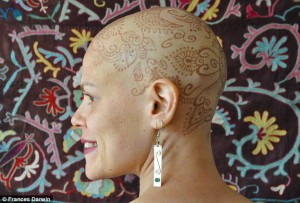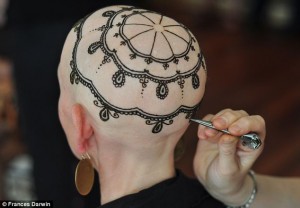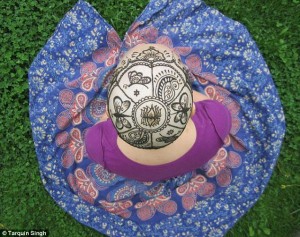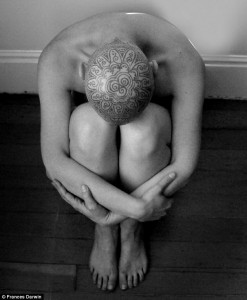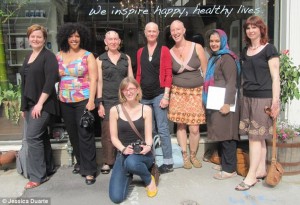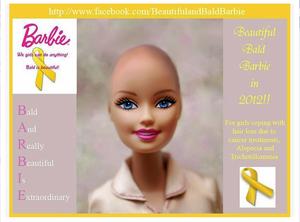The stunning ‘henna crowns’ helping cancer victims come to terms with their hair-loss
01.06.2012 in HAIR LOSS HEALTH NEWSA photographer is on a mission to transform the bald heads of women with cancer and genetic alopecia using the ancient art form of henna.
Frances Darwin launched Henna Heals last year, where artists hand-paint intricate designs onto women’s scalps with a natural plant-based paste, giving them back their femininity, confidence and power.
Using a hairless head as a canvas, ‘the designs are customized and one-off works of art,’ Ms Darwin told Today, who wants to empower cancer sufferers to feel beautiful again.
Henna Heals: Tara Schubert, who has Stage 3 breast cancer, models her intricate design by Henna Lounge
Henna has been used since antiquity in countries such as Pakistan, Morocco, Somalia and India for decorative purposes, to bring the wearer luck, joy and enhanced beauty.
Ms Darwin’s Henna Heals is on a path to make conditional female baldness not only acceptable, but also chic.
Known as henna crowns, the designs are not tattoos, involving no needles or pain, and last up to two weeks – offering women who suffer hair loss, and the lost sense of self, femininity and confidence it brings, a chance to feel beautifully adorned while at the same time also inviting dialogue about a sensitive subject.
Henna crowns: The designs offer women suffering hair loss, and the lost sense of femininity it brings, a chance to feel beautiful – as Sandee Waite discovers with her design by Tarquin Singh
Painted canvas: Kelly, who only gave her first name, was diagnosed with breast cancer in 2011 and recently finished her last chemotherapy treatment, believes the Henna crowns are a healing experience
Ms Darwin was inspired to start Henna Heals when she first saw the henna crown’s power to transform.
While taking pictures of a breast cancer patient whose head was adorned with a henna crown, the woman told Ms Darwin she had never felt as beautiful, even before she had cancer.
Ms Darwin knew she wanted to continue empowering women to feel beautiful and confident, while at the same time helping to de-stigamatize hair-loss.
Cleverly chic: Tara Schubert models another design by Henna Lounge, promoting positive conversations and interactions during such a challenging time
Healing team: Henna Heals artists and participants (from left to right) Holly Monster, Luma R. Brieuc, Sandee Waite, Frances Darwin, Meg Montgomery, Sunni Rochelle, Nadia Bukhari and Tarquin Singh
Each design take between 60 and 90 minutes for the artist to create, which cost about $100. Ten per cent of profits also go into a fund to assist people who would like a henna crown but are unable to afford it.
Ms Darwin said: ‘For cancer patients, the henna crowns really are a healing experience. This is all about them reclaiming a part of themselves that would normally be perceived as ill or damaged or not nice to look at and making it more feminine and beautiful.’
Read more: Frances Darwin Photography: Frances Darwin Photography
HennaHeals.ca | We are a team of artists based in the Greater Toronto Area. We specialize in professional henna-art and photography services for people who are experiencing complete hair loss from Cancer or Alopecia
Our Trichologist pointed out that while hair loss is not life-threatening, it can be ‘life-altering’.
He said the problem should be taken seriously and that available treatments can greatly improve women’s psychological health and quality of life.
Contact The Hair Centre and CHECK OUT OUR RESULTS
Do you have Hair Loss Problems, read our Hair Loss Help





